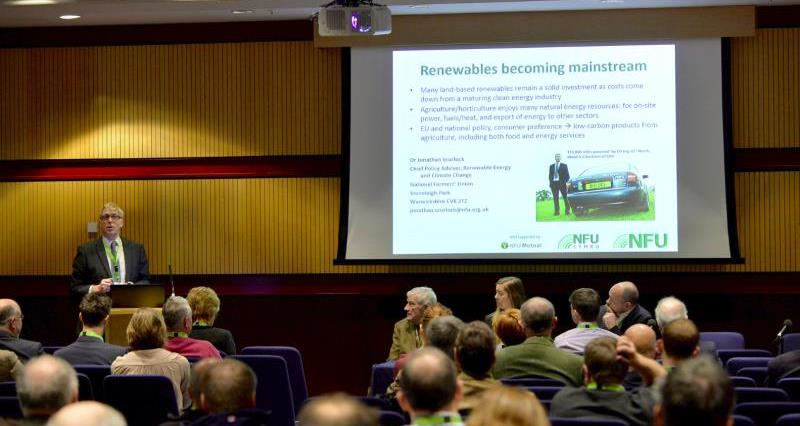Delegates heard examples of projects close to making a good case without the need for government incentives. NFU expert Dr Jonathan Scurlock made the case for multi-use sites, achieving energy production, profitable farming and biodiversity.
“We can have sheep in a solar field, we can get a silage cut and we can certainly get biodiversity. Do falling costs mean renewables make sense even without Feed-in Tariffs? Yes, I believe so.
“We have an opportunity to deliver land-based projects whether our government is cutting away at support or not.”
More from NFU16
- Our Conference hub page
- NFU16: Make your voice heard on National Living Wage
- NFU16: All change for sugar
- NFU16: The livestock session
- NFU16: NFU Cymru Early Bird - the tweets
- NFU16: Sustainability - how McDonald's woke up
- See pictures from #NFU16 on our Flickr stream, here.
- NFU16: Our sustainable food service call
- NFU16: Farmers to hear Brexit debate
- NFU16: Truss on BPS, TB and the EU
- NFU16: BPS delays 'unacceptable, a fiasco'
Solar installations of 500kw could return six to eight per cent returns without tariffs, he said, and 11-12% at current FIT rates, while a smaller scale 50kw system might return just over seven per cent without tariffs and more if costs come down a bit.
Victoria Griffiths of Aeolus Power, said wind still made sense – but you had to have the right site. “The bigger energy user you are and the better the wind speed, the more cost effective a turbine is,” she said.
The biggest game-changer is likely to be in renewables storage.
One of the challenges to decarbonising electricity generation using intermittent renewables like wind and solar is their low ‘capacity factor’ or ‘despatchability’.
The wind does not always blow, and daylight is limited.
Competitively-priced battery packs are likely to be the Next Big Thing – and they could also provide part of the answer to easier connections to the local electricity network.
Duncan Bott, MD of Belectric Solar, explained how farmers might one day “store power when you won’t get a lot for it and sell it back at peak times”, or “hide from peak energy prices”.
